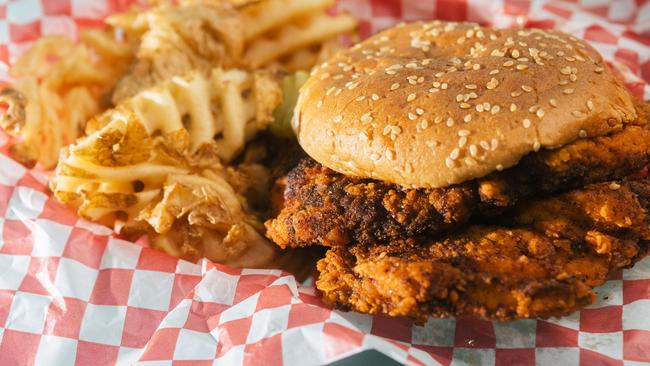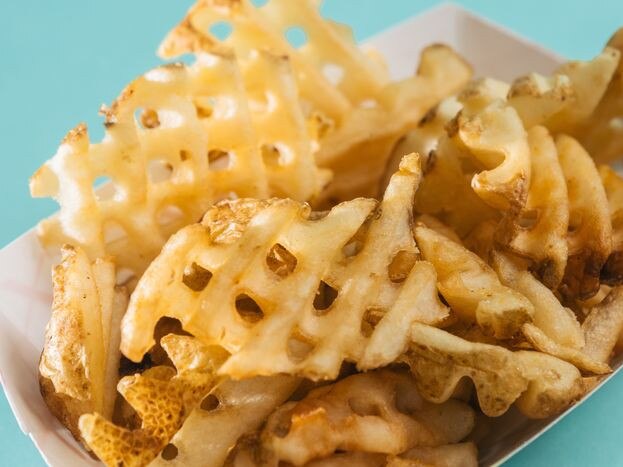Need for comfort greases fried food market
US consumers crave cheese curds, fried chicken and french fries; it ‘satisfies the inner self’. The pandemic took an American obsession to a deeper level.

Fried food is one of Americans’ oldest obsessions. The pandemic took that to a deeper level.
More people are ordering french fries with their fast food, and seeking solace in fried chicken, say food industry executives and nutritionists. Repairs of restaurants’ deep-fat fryers have doubled due to overuse. Nearly half of US households now own air fryers. And there aren’t enough cheese curds to go around.
Devotees of deep-fried foods say they carry indulgent, therapeutic properties that healthier fare – salads or grilled chicken – can’t match.
Fried chicken “satisfies the inner self”, says Libby Friz, a television writer who lives in Los Angeles, making her feel like “a cat asleep in a sun spot”.
In Ellsworth, Wisconsin, known as the state’s cheese curd capital, dairy processor Ellsworth Cooperative Creamery can’t keep up with orders for the cheesy nuggets, which are often deep-fried, says chief executive Paul Bauer.
The creamery’s cheese-curd business grew 38 per cent last year and sales in the first two months of this year are up another 24 per cent, Bauer says, as grocery orders soar for its Cajun and hickory bacon-flavoured curds, and more restaurants add Ellsworth’s beer-battered variety to their menus.
Companies that specialise in battering, breading and seasoning are having a field day with curds, Bauer says.
“Those guys are going like gangbusters,” he says. “The market has changed to comfort food.”
While the health risks of fried food are plentiful, nutritionists say there can be an upside: consuming greasy morsels and meals can reduce the effects of stress on the body and can even help people produce more serotonin, which can lessen feelings of depression.
Whether it’s fried eggs or deep-fried Oreos, Kansas native Spencer Mustoe agrees. “Generally, if you start your day with hearty comfort food, you know that it’s either about to become a great day or you’re already well into a great day,” says Mustoe, who works for a start-up software company.
The number of fried foods on restaurant menus in the US rose 5 per cent in the first three quarters of last year, according to market-research service Mintel Menu Insights. Demand for fried-chicken sandwiches has sparked an arms race among restaurateurs, with at least 10 major US fast-food chains – including McDonald’s, Shake Shack and Jack in the Box – introducing the sandwiches during the pandemic.
Lamb Weston, a key supplier of french fries to fast-food chains, says the US’s “fry attachment rate” has increased. The measure, which refers to the rate at which consumers add french fries to their orders, rose to 24 per cent of orders, from 22 per cent before the pandemic.

Lamb Weston executives said recently that even rising prices were not lessening consumers’ appetites for their fries. “What’s the elasticity of a french fry?” Lamb Weston CEO Tom Werner asks. “Right now, we haven’t seen it.”
Those orders are giving the nation’s deep fryers a workout and putting wear and tear on the equipment. From March 2020 through to the end of last year, repair calls for deep fryers at restaurants rose 93 per cent due to higher utilisation, says Daniel Estrada, CEO of 86 Repairs, which co-ordinates repair services for restaurants.
The deep-fried surge isn’t boosting business everywhere. WW International, formerly known as Weight Watchers, is lamenting that fewer consumers want to diet. Online searches for diet programs in January were down 20 per cent from a year ago, which is a big blow to its business, the company said on an earnings call on March 1.
“Traffic and search right now continues to be under pressure,” says Mindy Grossman, WW’s outgoing CEO. “That’s the industry-wide trend.”
Certified nutritionist Vanessa Spiller says the pandemic was a difficult time for many people, with normal routines disrupted and boundaries between work and home blurred. “People go to nostalgic foods to feel better,” she says. “We are definitely coming out of the pandemic less healthy.”
Tyler Singletary, a technology start-up executive who lives in Brooklyn, says his go-to is chicken-fried steak. The thin slice of beef, which is breaded, fried and smothered in Southern-style white gravy, makes him nostalgic for what his mother used to cook: “She just called it cube steak.”

Health-conscious consumers are looking for ways to indulge their fried-food cravings at home, too. Air fryers, countertop convection ovens that make food taste fried by circulating hot air at high speeds, were among the most popular holiday gifts of last year.
People are using the appliances to fry everything from cauliflower to entire pork tenderloins, without the hot oil of a deep fryer, says Bob Nolan, head of demand science at Conagra Brands. More than 40 per cent of US consumers own air fryers, according to Mintel.
“Air fryers have exploded in popularity,” Nolan says. “People are looking for crispy, restaurant-quality food. But a big, giant thing of grease is not appealing to millennials.”
Some fryers have been exploding literally. In November, an air fryer blew up when a student at Michigan State University placed it on an electric burner and accidentally turned on the burner, according to local news reports.
Wanda Yee, who lives across the US-Canada border in Vancouver, British Columbia, says her air fryer regularly sets off her fire alarm. But that hasn’t stopped her. A few weeks ago, Yee relocated the appliance outdoors to continue frying her spring rolls, waffle fries, chicken wings and almost everything else she cooks. “Our air fryer has been working perfectly once we moved it to our patio,” she says.
The Wall Street Journal


